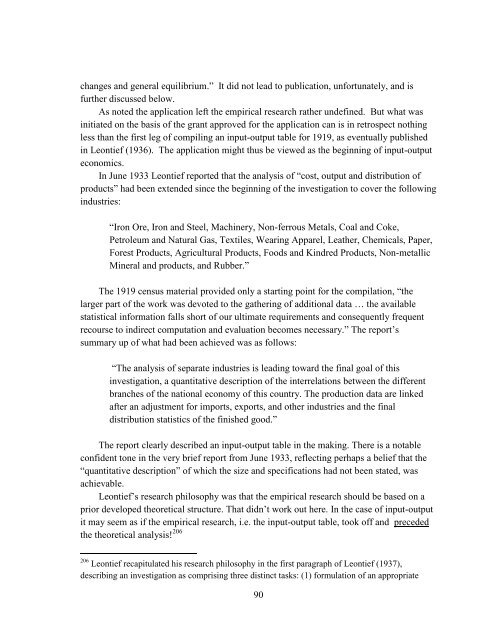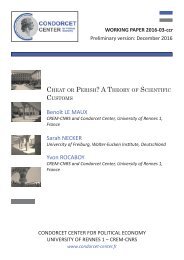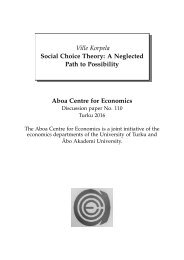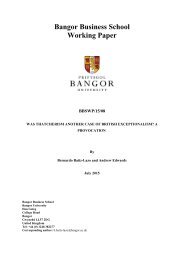MEMORANDUM
n?u=RePEc:hhs:osloec:2016_018&r=hpe
n?u=RePEc:hhs:osloec:2016_018&r=hpe
You also want an ePaper? Increase the reach of your titles
YUMPU automatically turns print PDFs into web optimized ePapers that Google loves.
changes and general equilibrium.” It did not lead to publication, unfortunately, and is<br />
further discussed below.<br />
As noted the application left the empirical research rather undefined. But what was<br />
initiated on the basis of the grant approved for the application can is in retrospect nothing<br />
less than the first leg of compiling an input-output table for 1919, as eventually published<br />
in Leontief (1936). The application might thus be viewed as the beginning of input-output<br />
economics.<br />
In June 1933 Leontief reported that the analysis of “cost, output and distribution of<br />
products” had been extended since the beginning of the investigation to cover the following<br />
industries:<br />
“Iron Ore, Iron and Steel, Machinery, Non-ferrous Metals, Coal and Coke,<br />
Petroleum and Natural Gas, Textiles, Wearing Apparel, Leather, Chemicals, Paper,<br />
Forest Products, Agricultural Products, Foods and Kindred Products, Non-metallic<br />
Mineral and products, and Rubber.”<br />
The 1919 census material provided only a starting point for the compilation, “the<br />
larger part of the work was devoted to the gathering of additional data … the available<br />
statistical information falls short of our ultimate requirements and consequently frequent<br />
recourse to indirect computation and evaluation becomes necessary.” The report’s<br />
summary up of what had been achieved was as follows:<br />
“The analysis of separate industries is leading toward the final goal of this<br />
investigation, a quantitative description of the interrelations between the different<br />
branches of the national economy of this country. The production data are linked<br />
after an adjustment for imports, exports, and other industries and the final<br />
distribution statistics of the finished good.”<br />
The report clearly described an input-output table in the making. There is a notable<br />
confident tone in the very brief report from June 1933, reflecting perhaps a belief that the<br />
“quantitative description” of which the size and specifications had not been stated, was<br />
achievable.<br />
Leontief’s research philosophy was that the empirical research should be based on a<br />
prior developed theoretical structure. That didn’t work out here. In the case of input-output<br />
it may seem as if the empirical research, i.e. the input-output table, took off and preceded<br />
the theoretical analysis! 206<br />
206 Leontief recapitulated his research philosophy in the first paragraph of Leontief (1937),<br />
describing an investigation as comprising three distinct tasks: (1) formulation of an appropriate<br />
90





